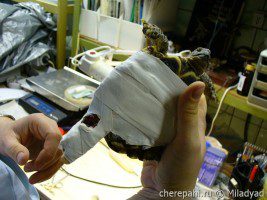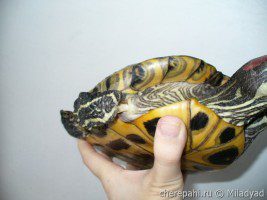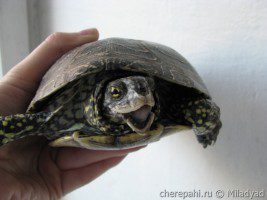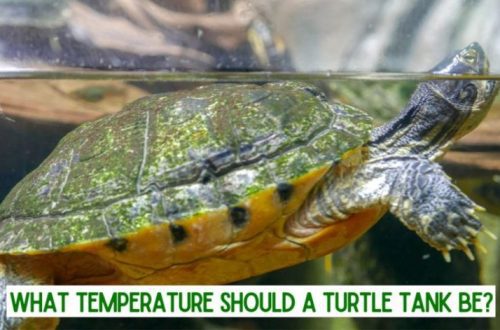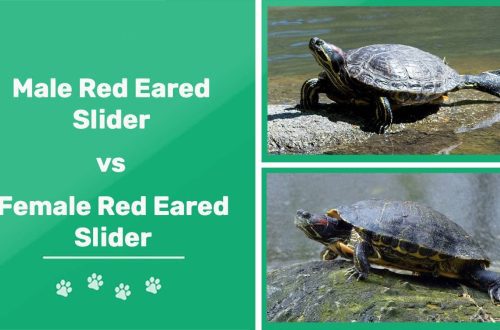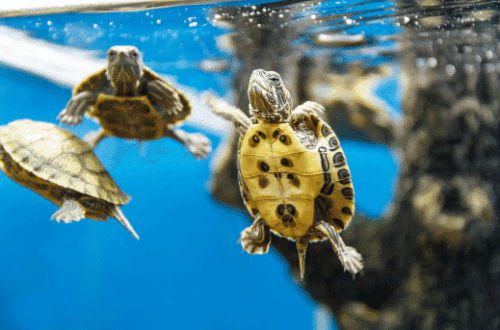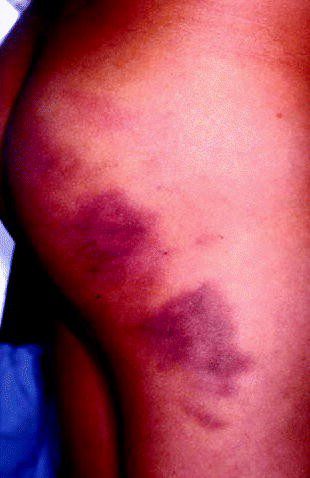
Treatment of fractures, bruises, abrasions, burns, injuries, wounds
Symptoms: various skin injuries Turtles: water and land Treatment: self-treatment possible
The reasons: The most common causes of injury in turtles are:
- shell fracture – dogs, falling from a balcony, from a terrarium, a man stepped on, a car ran over;
- paw fracture – any careless action with a lack of calcium, a fall from somewhere on a hard surface;
- lacerations, bitten paws, tails – an attack by a rat, another turtle, a bacterial infection;
- small wounds – due to skin friction on the edge of the shell, on the sharp edges of stones;
- burns – about an incandescent lamp, about a water heater;
- bruises and bruises – when the turtle hits the shore, falling from the house or the second floor in the terrarium onto stone ground, falling to the floor;
ATTENTION: The treatment regimens on the site can be obsolete! A turtle can have several diseases at once, and many diseases are difficult to diagnose without tests and examination by a veterinarian, therefore, before starting self-treatment, contact a veterinary clinic with a trusted herpetologist veterinarian, or our veterinary consultant on the forum.
Treatment: 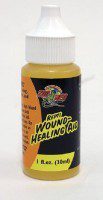 Wounds washed with Dioxidine (solution of Furacilin, solution of Chlorhexidine), with bleeding with hydrogen peroxide.
Wounds washed with Dioxidine (solution of Furacilin, solution of Chlorhexidine), with bleeding with hydrogen peroxide.
A fresh wound after washing should be treated 1-2 times a day with drying sprays. Suitable for turtles: Chlorfilipt, “silver” or Nikovet – aluminum spray, Kubatol, Septonex, Zelenka (in extreme cases), Terramycin, Chemi-spray, ZOO MED Repti Wound-Healing Aid. Iodine and alcohol liquids and sprays should not be used.
If the wound is very fresh and bleeding, it is better to transplant the turtle into a container with paper, napkins or a medical diaper to avoid infection. After 2-2 days, when the wound heals, you can reduce the time spent in the container after treating the wound to 1-2 hours, and then return it to the aquarium or terrarium.
After the formation of scabs, the wound is lubricated with healing ointments such as Solcoseryl, Boro-plus, Actovegin, Rescuer, Eplan, etc.
Trionicsam is first treated with Terramycin, which disinfects the wound, then it can be smeared with Eplan gel, which forms a crust. The drug Triderm is used only at the last stage, when successful epithelialization occurs. If Trionics tries to open the wound, then it is necessary to seal it with a band-aid.
Scuffs and small wounds should be treated in the same way as wounds.
Lacerated wounds are sutured, and the sutures are treated with Zelenka/Terramycin. If you did not give the turtle a course of antibiotics, then you need to watch the animal very carefully. The wound should be clean, dry and covered with a crust. There should be no redness around the edges and no discharge.
If an abrasion on the neck is formed from rubbing the skin of the neck against the shell, then you need to carefully grind off this protrusion with this blunt file. After cutting, the place where this growth was must be sealed with BF glue (sold in a human pharmacy and serves to treat small wounds. It will take a long time to heal the scuff, but it’s not scary.
Burns – the wounded surface is cleaned, and then drugs are applied to it that promote its speedy healing, for example, Panthenol, Olazol, Levavinizol. For minor burns, use 1% tannin or a similar emollient. In the case of larger and more serious injuries, the course of treatment should be a veterinarian, because he will be able to stitch and hold the wound together.
With redness and peeling, nothing needs to be done. When bubbles appear, they are opened by carefully cutting off the upper part, then the wounds are covered with a 5% aqueous solution of tannin or a 10% percentage solution of nitric acid silver. The crust on the wounds eventually leaves on its own.
Suppuration is treated in the same way as an ordinary abscess.
cult can be periodically treated with Eplan, Actovegin, Solcoseryl and up to the removal of sutures.

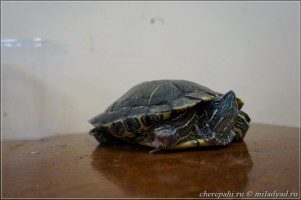
bites – the wound is thoroughly cleaned, disinfected, then prescribes an antibiotic. For deep injuries, surgery is sometimes required. Full healing of the bite site can be expected after 80 days with proper care.
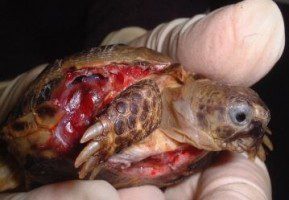
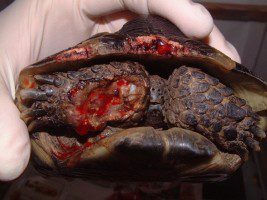
Bruises, bruises – can appear when the turtle hits the shore, as a small hemorrhage under the shell. It goes by itself.
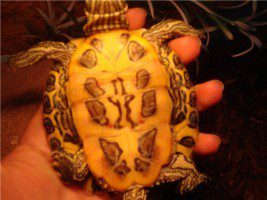
Fractures:Fractures should only be treated by a herpetologist veterinarian, or you can follow the herpetologist’s schedule if you cannot bring a turtle to the appointment.
Closed fracture – you can count on spontaneous treatment. Open fractures – should be treated with splints, screw clamps. The recovery process is longer than in mammals. When treating, it is necessary that the turtles do not hibernate during the winter. After bone surgery, turtles must be given antibiotics for 10 days. Fractures of the limbs – are eliminated by the imposition of splints. Jaw fractures – fixation with pins, using a two-component epoxy adhesive. Its advantage is that it does not generate much heat when in use.
